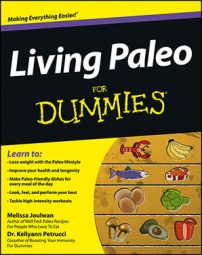You might be wondering what impact living Paleo will have on your budget. The truth is that eating like cave men — meat, vegetables, fruits, and healthy fats — is more economical in the long run than eating packaged food that's devoid of nutrition.
If you decide to invest in grass-fed, pastured meats and organic produce, you may see an increase in your grocery tab at first, but that extra expense will be offset by the long-term health benefits — plus fewer meals at restaurants — of living Paleo. With a little creativity and exploration, you can find reasonable prices on high-quality foods that are as good for your wallet as they are for your body.
Choose whether to buy organic
Eating local produce that's in season is the best option, both for the health of your body and your bank account. But not all your produce needs to be organic. Every year, the Environmental Working Group (EWG) identifies the dirty dozen of produce: fruits and vegetables with higher levels of pesticides.
If you can afford it, buy organic versions of the produce on that list, but if your budget can't support it, buy local, conventionally grown produce and wash it well under running water before eating.
The dirty dozen — buy organic
Buy organic versions of these fruits and vegetables whenever possible:
Apples
Bell peppers
Blueberries
Celery
Cucumbers
Grapes
Lettuce
Nectarines
Peaches
Potatoes
Spinach
Strawberries
The clean 15 — buy conventional
When you can't find or afford to buy organic, buying conventionally grown versions of these fruits and vegetables is okay; just be sure to wash them thoroughly under running water:
Asparagus
Avocado
Cabbage
Cantaloupe
Eggplant
Grapefruit
Kiwi
Mango
Mushrooms
Onions
Pineapple
Sweet peas
Sweet potatoes
Watermelons
Assess your meat options: Grass-fed and pastured or factory-farmed
Grass-fed, pastured meat is better for you and better for the environment than factory-farmed animals. This high-quality meat is more expensive than conventional, grocery store meat, but the payoff for your health and the planet is worth the investment, if you can afford it.
Grass-fed pastured animals live as they should, in humane, natural conditions that don't require that they're fed antibiotics. Healthier animals mean healthier, more nutritious meat for you. Grass-fed, pastured meats have healthier fat, too. They're up to four times higher in vitamin E than feedlot beef. The meat is lower in overall fat, too, and it's higher in health-friendly omega-3 fatty acids.
If your budget can't support buying pastured meat on a regular basis, treat yourself when you can, and the rest of the time, the following cuts are a good second choice:
Skinless chicken or turkey breast
Eye of round roast or steak
Sirloin tip side steak
Top round roast and steak
Bottom round roast and steak
Top sirloin steak
Low-fat ground beef

